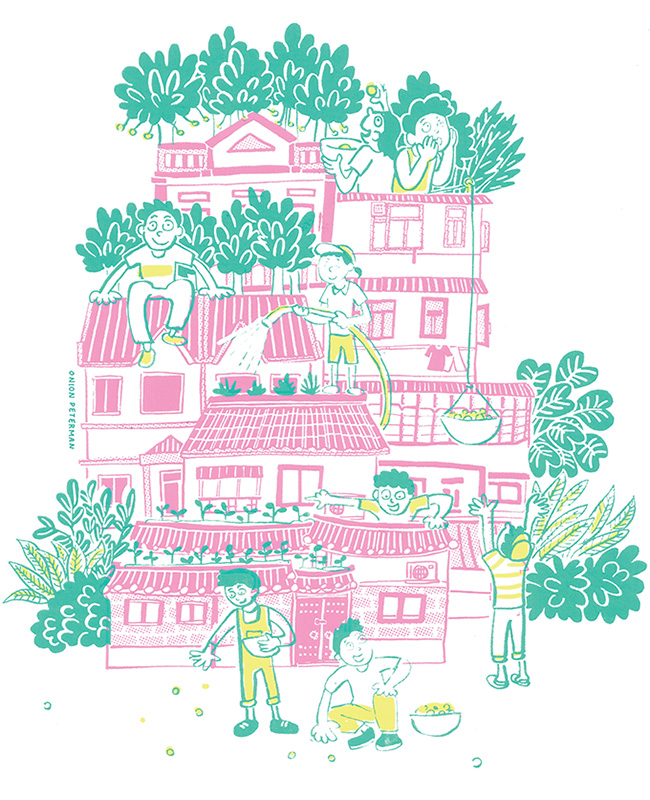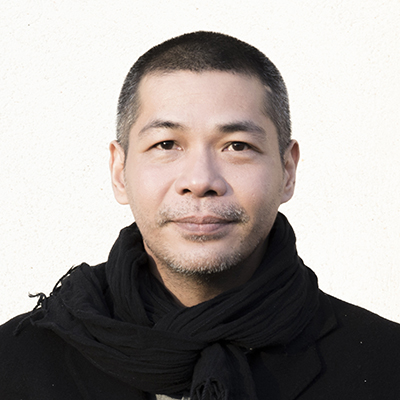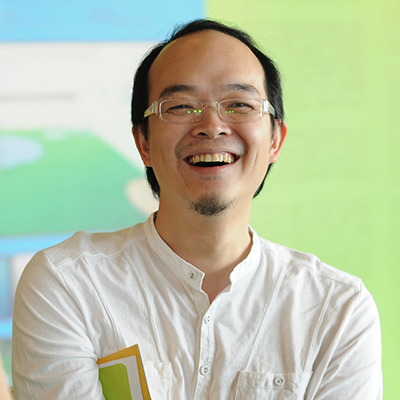Professor Frank Vigneron, Law yuk-mui and Yim Sui-fong in conversation with Arin Rungjang and Pak Sheung-chuen
Date: 13 February, 2018
Transcripts: Christopher Wong Hoi
Proofreading: Professor Frank Vigneron
Editing: Law Yuk-mui, Yim Sui-fong
English Translation: Winnie Chou
Artist research and its form and challenge
Professor Frank Vigneron: Of the five of us in this room, we all have university education and so on. So for us, yes, the kind of historical information you use in your artworks, as you said, is in the air. But it’s not true for a large majority of people. You might not call the way you create your work research, but it still qualifies. Well, I’m playing the devil’s advocate here, I do not agree entirely with what I’m saying. But, to talk about the situations at Documenta, in an art’s context, my concern is that the potentially subversive content of your work is accessible for people who basically already agree with it. No policymaker from the government in Hong Kong or Thailand for instance will go see this exhibition and change their mind about how this knowledge can be used to change their political decisions. Another way to put that information out there would be to write articles, to write books and so on. So, why did you choose art? No matter how you look at it or how optimistic we are about it, it’s a very small group of people who take an interest in that kind of expression. So, what are we doing when we are doing that? Is an art venue the right place to talk about these issues?
Arin Rungjang: I don’t think so. Art has its own priorities. At times, I can’t say that it’s the right place because it always ends up with rich men and collections. Artists are not so pure in that kind of sense. I think that’s why we always have to do this internal criticism. I think it’s based on the context that you are working with. One thing for sure is that artists are not in the studio anymore. So one is not in the studio, it has this sense of transition between difference spaces. Like studio spaces, art spaces and reality spaces, and each space has its own priority for the contexts that lead to whatever subject the artists are concerned with. So we can’t just sit in this, I mean we can as well, but it has to have some meaning. Like one young artist, during the political turmoil in Thailand, for 10 years, he just locked himself in the studio and placed an empty canvas on the floor. Then whatever dust set on the canvas, he put transparent enamel one layer after another, and it turned into an abstract painting. But the process is like doing nothing, just waiting for all these contexts around his studio changing. While the time is changing, the context is changing. He locked himself inside the studio and the canvas changed over the process. So that could be one thing as well.
Frank Vigneron: Can we use newspapers, or things like to that, to show that kind of art, Sheung Chuen?
Pak Sheung Chuen: Yes, that is also one of the problems I am facing. Actually, in the beginning when I feel that I am really doing an artwork is the time when I publish the work in the newspaper. It connects me with all things. So when I was creating artworks for the newspaper, sometimes they were related to the social situations, sometimes related to the political situations, sometimes maybe talking about the history of Hong Kong, but most likely quite a lot of them are talking about the everyday life of Hong Kong. And that format, readers read it and they accept it. It changed their angle on their daily life or their angle on one issue. I think this format of art just fits the newspaper. After I did this for almost 5 years, I went to the US for a one-year residency. Basically, I stopped it because I found that when I was in the US, I couldn’t feel exactly what was happening in Hong Kong. I couldn’t do it anymore. And when I was in New York, I was so-called educated or affected by different kind of aesthetics or art form that was used in gallery, museum and industry. That kind of art form was different. After I came back from the US to Hong Kong, some situations came up. One of the situations was when I went back to do artwork for the newspaper, I couldn’t go back to that mode again. Because different forms in the artwork are actually suitable for different kinds of phases for yourself. So what kind of art form, why it came out, what are your habits, your research methods, etc. all of those things add together and contribute to realize the final form. Since that time, an important question I need to think about is what kind of things I really like to or really need to do. At the same time, I faced two problems. The newspaper can’t support me as it only gave me HKD 500 for every issue. So for the whole month, if I do it every week, I’d just get HKD 3,000. That’s not enough. But my income mainly comes from the gallery system. That gallery system is attached to the art fair system, the global Biennale system. They are all connected together. I have a strong feeling that the gallery system has its own aesthetics, and my newspaper artwork is not suitable for that. When the gallery started selling my artworks, they were actually selling my artworks before my newspaper period. I was thinking about how to treat this kind of project, for something that can be used in gallery and museum. I face a lot of problems. Until now, I think I can’t solve it. The situation is because of the Umbrella Movement, I stopped everything. After I stopped everything, I needed to restart again. Basically, the thing I am doing now is with the elements or the art form of the situation of society, my own situation as well and also the situation of the art market system. Altogether they form something that comes out. I am still doing some newspaper artworks because when I am doing the newspaper artwork, I don’t think about these issues.
Pak Sheung Chuen’s recent work published in newspaper.
Frank Vigneron: Taking an example about your work Mongkut (2015), I had a much more down-to-earth question, when people visit that exhibition for the first time, you have a reproduction of the painting showing the crowning of this Siamese king, the reproduction of the crown which is itself a reproduction of the reproductions this king made of his crown to give as a present to Queen Victoria and Napoleon III . My concern is that people who have never heard of Walter Benjamin before and the way he talked about how an artwork had an aura because of its singularity, and how that aura was displaced after the invention of photography and the mechanical reproducibility of images. How much text or background information do you provide on the wall descriptions?
Mongkut (2015), Arin Rungjang
Installation. Double projection video HD 16/9, color, sound, 14 min 30 s & 14 min 30 s ; Photo courtesy of the artist
Image source: www.jeudepaume.org
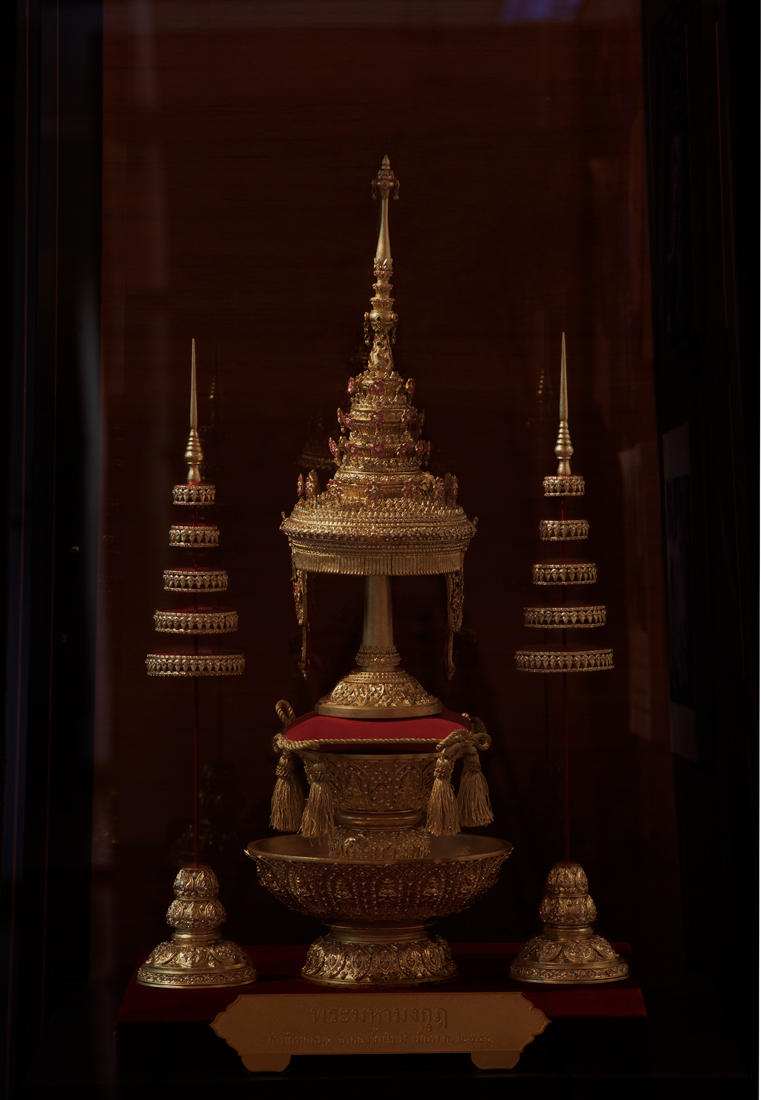
Mongkut (2015), Arin Rungjang. Photo courtesy of the artist
Image source: www.jeudepaume.org
Arin Rungjang: So we are talking about different levels and different categories of knowledge. Then the visitors have their own knowledge that was provided by the government, so this knowledge is like the basic/common knowledge that everyone has. Except for those who didn’t get any education, they would get another knowledge. But this knowledge is like a standard knowledge. One thing that would reflect the minimum would be that standard knowledge. That’s one thing I find important. So this work for myself is not about giving information, it’s about reflecting that information or knowledge. So different viewers have their own knowledge. For those who don’t have any knowledge, they might look at that crown going down on the floor and say this is God. That’s how it reflects the knowledge of the viewers. Those who are highly academic and educated, they might interpret it in so many layers. So this is not about how I give the layers, but the whole exhibition creates a situation and the viewers are part of the knowledge.
Pak Sheung Chuen: I had a similar work related to that method that Arin just talked about. In 2013, there was an exhibition in Beijing and that exhibition was held by a Hong Kong curator as well as the Hong Kong office in Beijing. I wanted to test the role Hong Kong citizens had in Beijing? I made a piece that was very simple because in China, 64 or June 4th, was a taboo. I just brought a camera and went to the university of Beijing asking people if they could face the camera and speak up, counting from 1 to 63. Afterwards, I would end the shoot with them facing the camera. So when I went to the campus, the people basically had three kinds of reactions when I approached them. One reaction was that when they faced the camera and counted from 1 to 63, they knew what it was about and they wanted to do it. They used this action to make a statement for themselves. The second reaction was that some people didn’t really care. They were young and they didn’t know what it was about. The third reaction was that they rejected my approach. I would explain to them afterwards the situation that we would show it in a public space in 798 Art District in Beijing. If you agreed to do it, you could sign your name. Finally, a little more than 10 people agreed to do it and I had a video of 10 people doing it in the gallery. At the opening day, the video was set in loop. The Office of Hong Kong in Beijing invited many famous Hong Kongers to the Opening Day and no one came to see my video. The video location was very easy to spot. Maybe they got informed beforehand and thought if they got close to the artwork and took a photo of it, it would be risky. But at the same time, no one pointed out the issue. It seemed as if you pointed out the issue, that meant the issue actually exists. That’s a situation maybe I want to do, I set the situation and everyone that goes into that situation has his/her own reaction, if I add all those reactions together, they become the context. The story of the work hasn’t ended. A student helped me with the editing of that film. After the exhibition, he lost the film. I asked him for the back-up of the video and he said he lost it. Then I asked the curator for the back-up of the video, she said she didn’t have it either. At the same time, they had a catalogue for the show and didn’t include any textual description of this artwork. So now this artwork has disappeared. But the whole situation is that all the people try to make it disappear. It’s so tricky. So I don’t have anything left now, it becomes something I can only talk about. But that is the real situation in China. It made the thing more real coming out.

1 to 63 (2013), Pak Sheung Chuen. Photo courtesy of the artist
Artist workshop :
An exercise to realise what is important to onself
Yim Sui Fong: Arin, can you talk more about for the stories you found in Hong Kong? For example, the colonial history of Hong Kong which started with the Opium War and Lin Zexu’s resistance to the English merchants, and also how you associated with the wuxia novel of Jin Yong which were taken as a reflection on Hong Kong society by that time. Finally, you led the students to exercise a research method from their family history in the workshop. For example, in the first workshop, students presented an interview with their parents in a video format. For the second workshop, the students further developed the content based on the interview into their own format, like sharing a deeper family story in photos, text, site visits, video and objects. So why did you choose this method for the workshop?
Arin Rungjang: Some of them found really great topics that could be made into artworks, for example a student photo-documented the trace marks of the building that were demolished, the building where their parents used to live in Wan Chai. So that’s great. You see this process could help them understand more what they see, like everybody could see those building traces everyday. But no one could relate himself/herself to that. So she can relate herself to that. She will be a better transmitter as an artist. Those processes can teach them to discover what’s related to themselves, so they won’t create something out of thin air. That would be more authentic. So many artists did the same things. A million people look at the trace of that building but only one person could deliver that message. Some of the students picked up really good elements, even adult artists could learn for their projects.
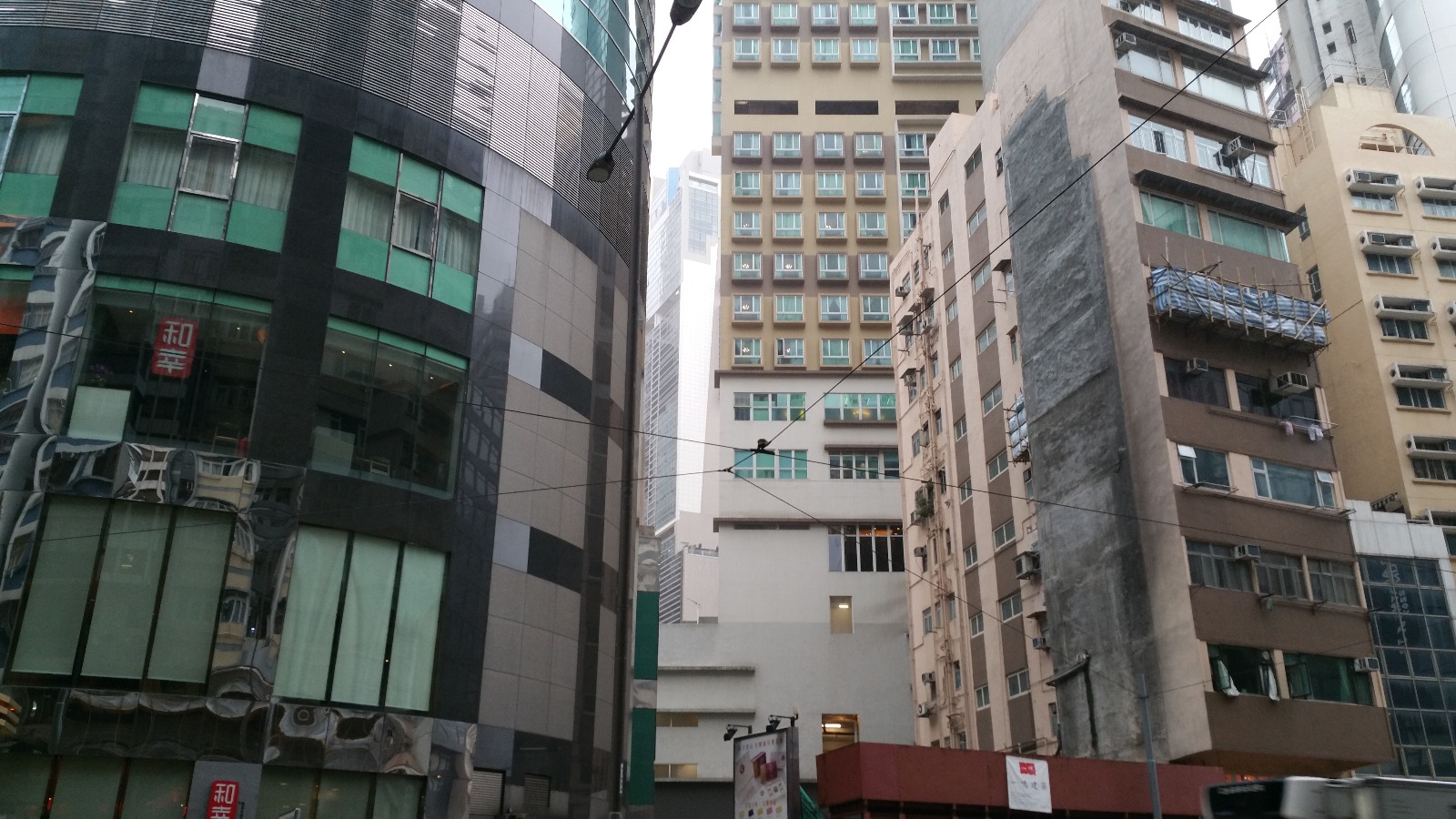
Morrison Road, Wan Chai. The dark marking on the building at the right-hand side was the previous home of student Janice Tang’s parent. The building was demolished due to redevelopment.
But some of them were still doing the same type of report. One of the students had been struggling and sent me an email, asking how to improve his work. He just gave me a number of immigration statistics, from mainland China to Hong Kong. I told him he had to pick something important, not as a fact, but as a feeling or emotion. Something that he feels strongly about. Then he picked his grandmother that raised him while his parents were working in Hong Kong. I basically taught them to realize what was the most important thing to themselves. If everyone wants to be an artist, they must learn how to know that important feeling, knowledge and emotion first. Then they will be able to deliver it. Otherwise we’d train them to become a machine, a machine of art production. That’s the reason why I asked them to get back to the most important person they could learn from first. It might seem like a basic idea but it’s also related to this whole system, the mother tongue. How the family prepare the children before they enter the other world of their career.
Yim Sui Fong: For Sheung Chuen, your creation is different from that of Arin. You always start from your daily experiences, but then you’d use scientific or statistic methods to record and to analyze your daily observation and association. Then you’d develop these findings into your creation. You also share this method in your workshops, such as using the notebook to record daily ideas and also the use of detailed excel sheets. For example, before the workshops begin, you asked the students to mark down the accidents and surprises of the day and keep writing them down for one week. And then in the first workshop, you shared your method and asked the students to observe the city through different motions. Then in the second workshop, you asked the students to develop a long-term proposal, for a year or even longer. Why did you choose this format for Asia Seeds? What was your intention?
Asia Seed Cycle 3 workshop
Pak Sheung Chuen: I think the element that I tried to deliver to the students was something very basic. Based on my experience of going to secondary school in Hong Kong, we learned something, I couldn’t say totally wrong, but most of them were in the wrong direction. As Arin mentioned, how do you know what’s important in you, that’s very important. I think the observation both outside and inside are the two basic elements that you would need. I always mentioned this one example that I went through myself and found it useful. So I tried to break it down into details and that is, if you have nothing you want to do, the idea won’t come out from the sky. You can use this kind of method. You do a very detailed research on your everyday life.
So I gave them two projects. One of them is observation. Every student has a different kind of situation to observe. Some students stand at a particularly spot on the street, some sleep there, others stay in the bus. The image is moving and your eyes are looking much faster than others. When you are seated or standing, you look outside at a fixed point, but at the same time people are looking at you, so you are observing how others observe you. When they do the report, you can hear how people react in different situations. I want to share this with them. I am thinking I am not teaching them a method only. I try to let them know if they can continue that kind of method, it can become a habit and that is more important. If it becomes a habit and your habit is different from that of others, you have a different angle to your daily life. Then you can learn deeper than others. Basically, in my class, we don’t have any specific content but we learn from the normal situations.
In the second lesson, I tried to teach them to connect different things together. You have your idea, I have my idea, I have different and a lot of ideas. How can we connect them together, to make them into a bigger idea? For example, just like Tehching Hsieh, the one-year project, he tied himself up with fellow artist Linda Montano and live for one year. A big idea like that. How can you make this happen? I teach them how to do it step by step, so something like that can develop. At the end I assigned them to write a proposal for one year, two years or ten years. I will follow their progress after the Rooftop program. When you think about something for 10 years, it is not about art only, it is about life. And how you turn an idea that can come out very fast like one second into a 10-year project. At the end, I tried to connect art with their life. If they think about something for 10 years, that issue will come out very easily.
Frank Vigneron: There are two words that come up a lot often in your discourses and they are ‘basic’ and ‘simple’.
Pak Sheung Chuen: That is like two sides of a coin. Something can come up very instantly, but I believe that immediate content can be turned into eternity. That is a kind of belief. So from habit, it gradually evolves into a belief.
In respect of Asia
Law Yuk Mui: So, final question, we want to talk about Asia and Asian culture exchange is our main concern. Arin has lots of experience of showing not only in Asia, but also internationally. The same for Pak Sheung Chuen. So from your experience, how do you see Asia today in the concept that you can define?
Pak Sheung Chuen: For me, I can only know about part of Asia and the other part is unknown. For example, if you talk about the Middle East, I only know something from the BBC. That’s also quite similar to Southeast Asia. The areas that we, Hong Kong people, are most familiar with are China, Japan, South Korea and Taiwan. So my map about Asia has to do with the Chinese group. I would always use the linkage, their relationship with China, to think about these areas. So in Taiwan, I would think about the political issues, there is a Chinese government but they are anti-China. I would use this kind of mindset to think about it. If I go to a Southeast-Asian country, I would think about the Chinese community in that country.
Arin Rungjang: It is so complicated and very difficult. It is very imperialistic. In this part of Asia, many people have been so scared of the white people for a long time. But it is so specific as well. It is not like we can’t talk about Asia using a single term. Like we have to specify on Reuters’ report on Rohingya and Rakhine. As you may know, Rakhine was Arakan before, Arakan was the empire that no longer exists. For a long time, it was connected to the South of Bengal, which was connected to India. That was the same land before between Bangladesh and India, before they divided that, a situation that is somehow comparable to Singapore and Malaysia. So they have this one connection in language, like an Indo-European language. Geographically, it is too complicated to talk about Asia as a whole. We don’t talk about Asia in the same sense as the European Union because we have been interfered with and separated. Actually we have the same sense of European Union, like a shared mother language, but it has been divided by a certain idea. So it’s so difficult to talk about Asia as a single region because this part of Asia has its own specific problems.
